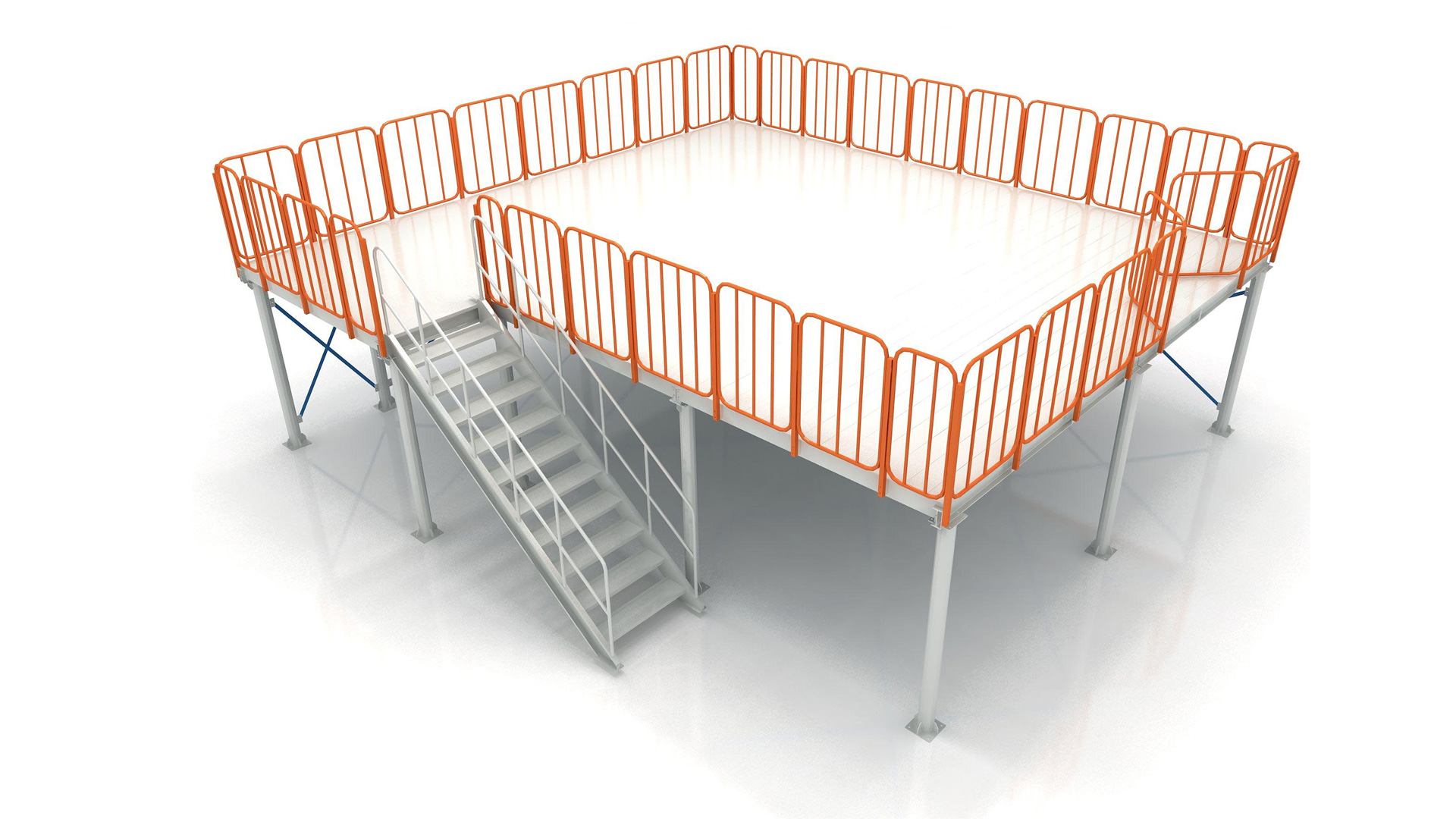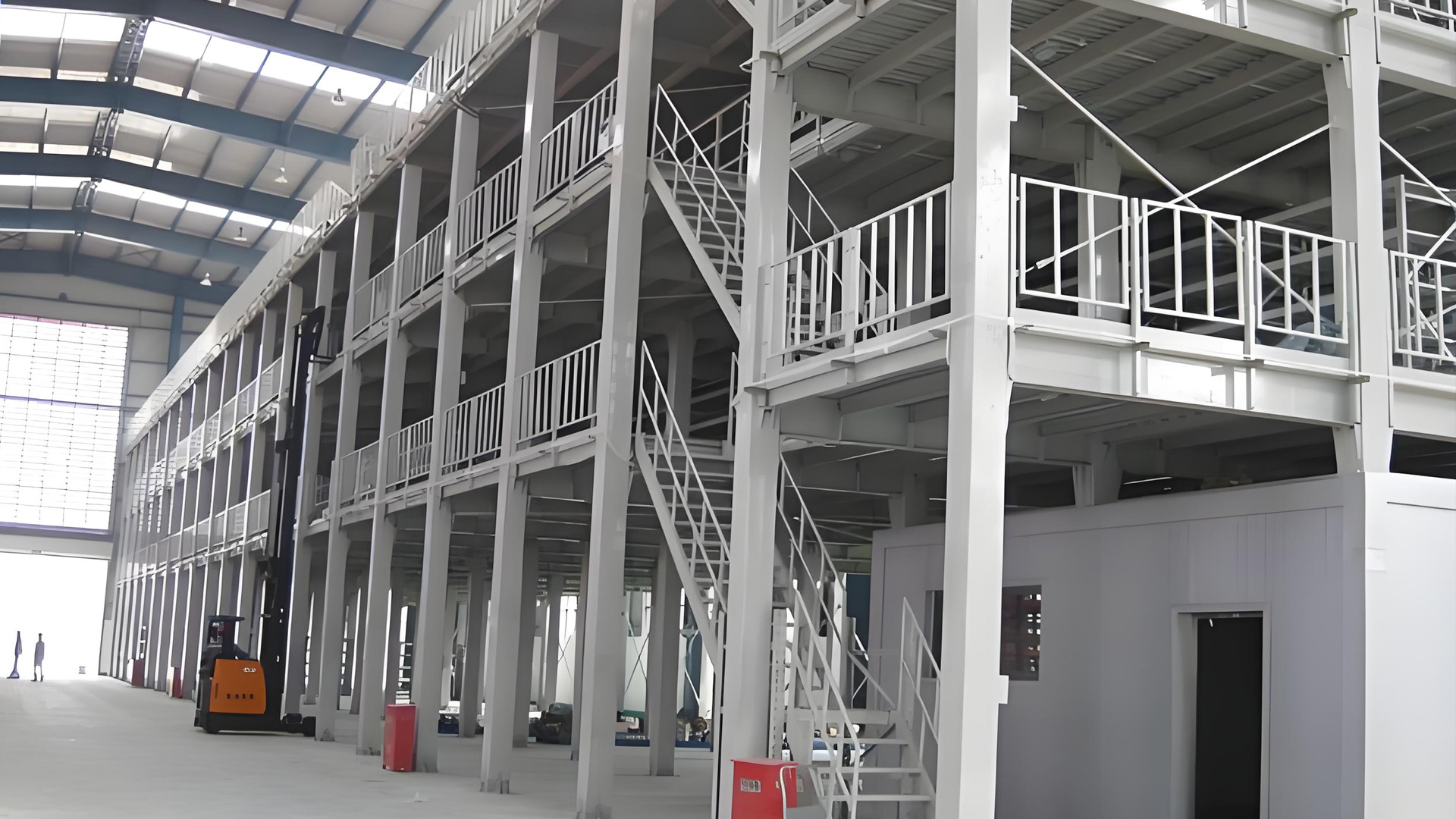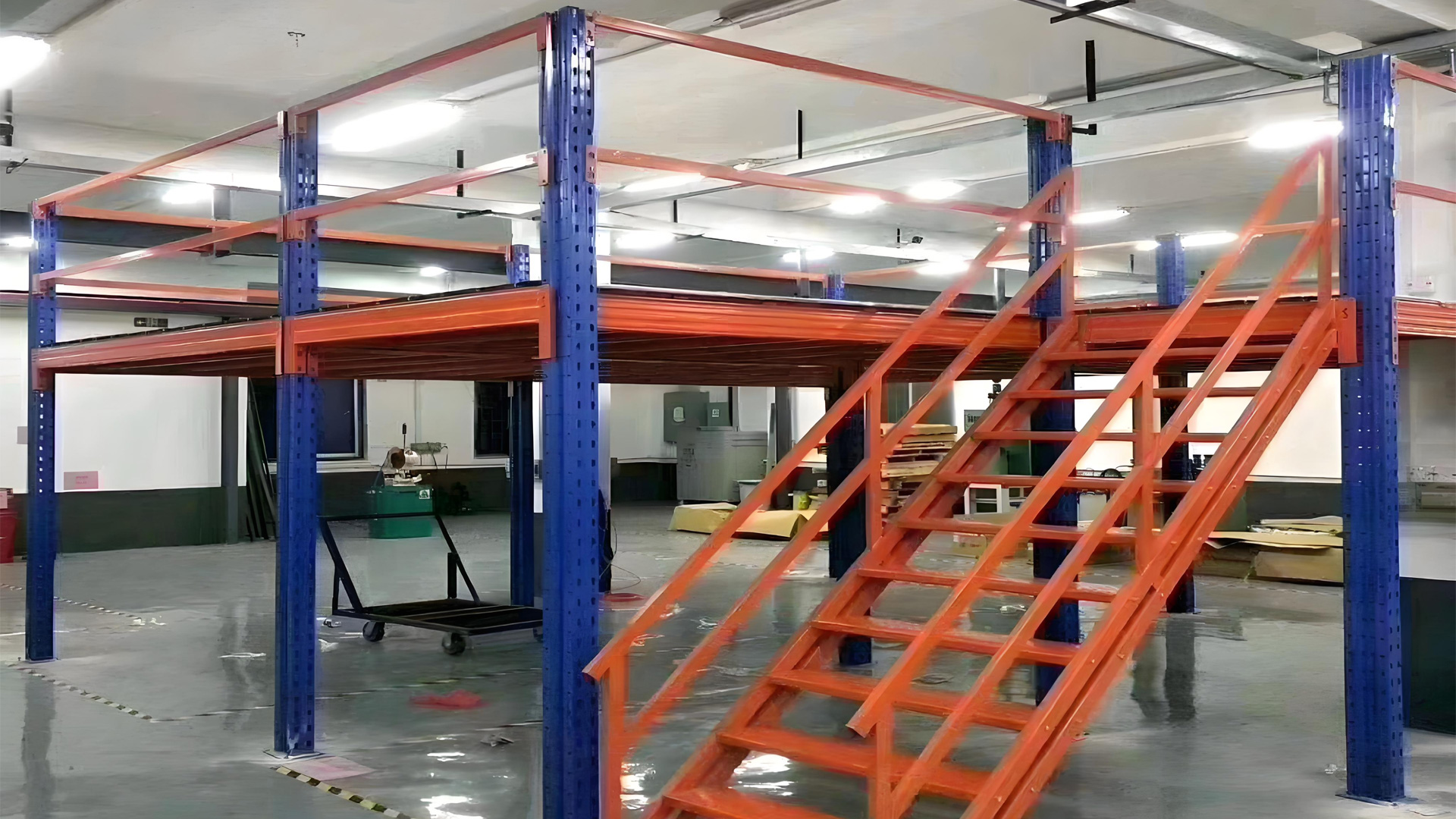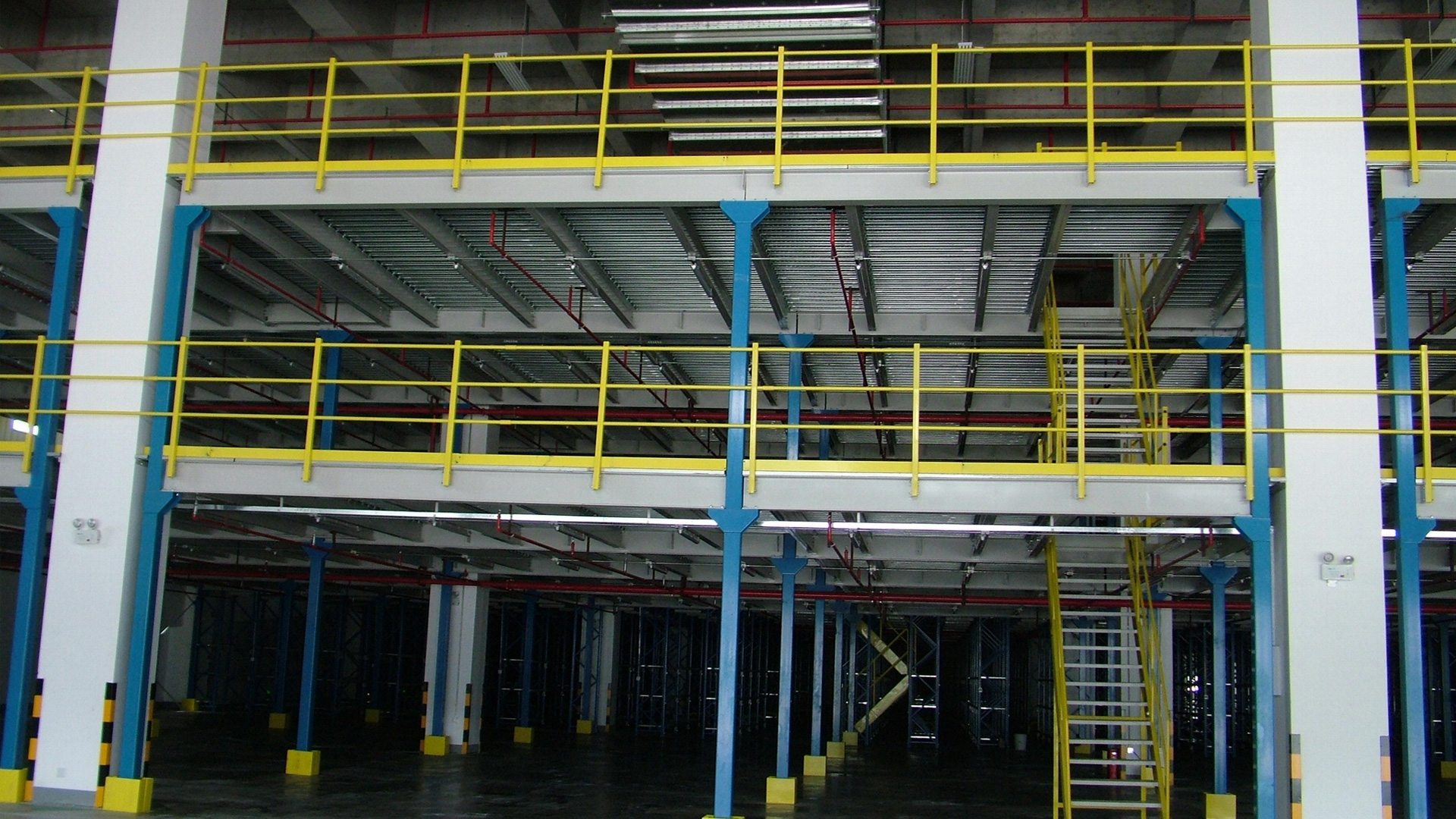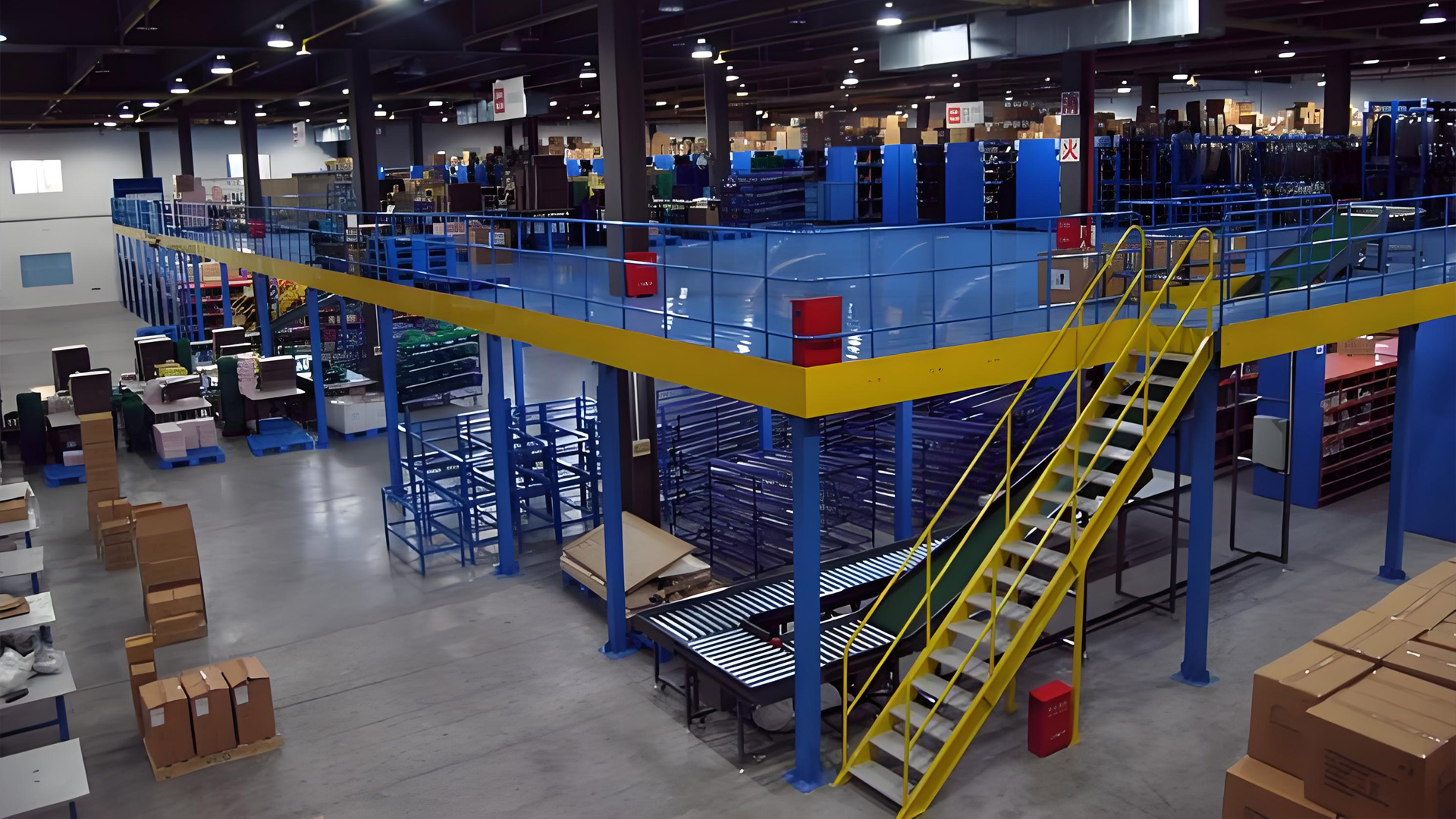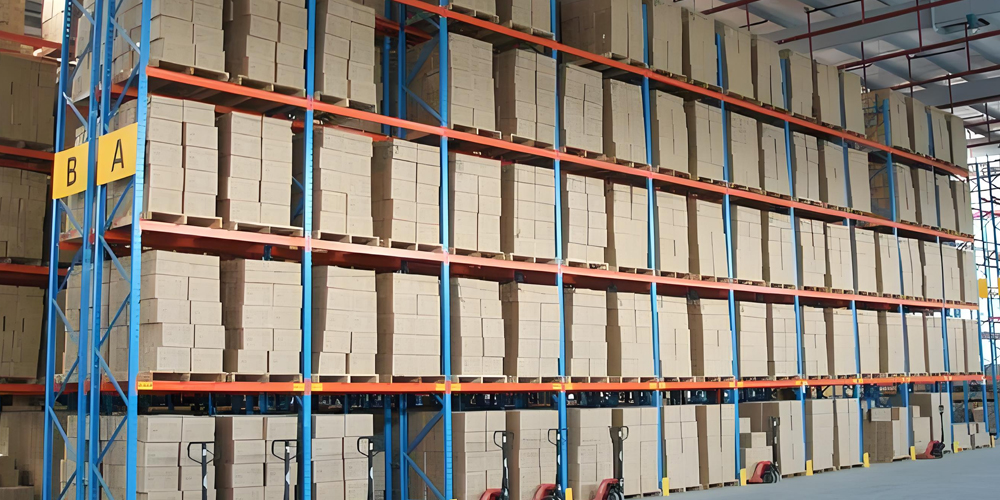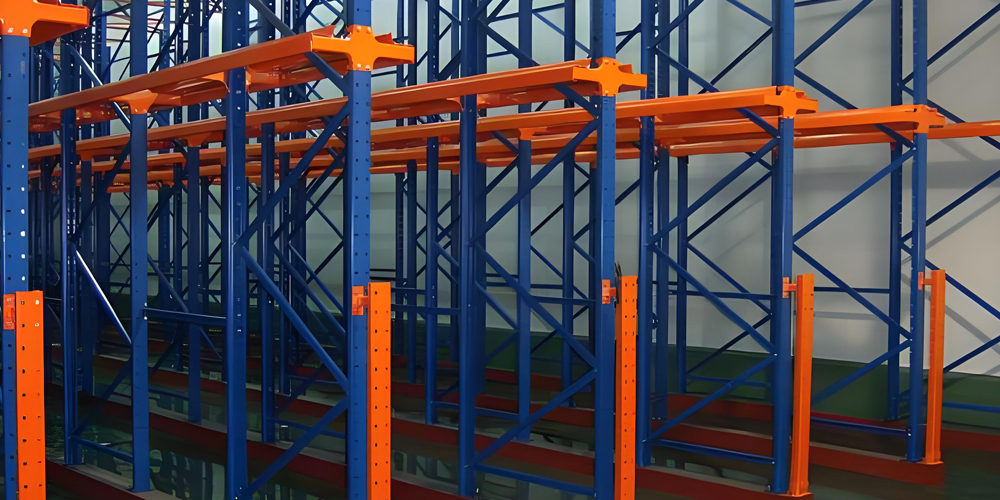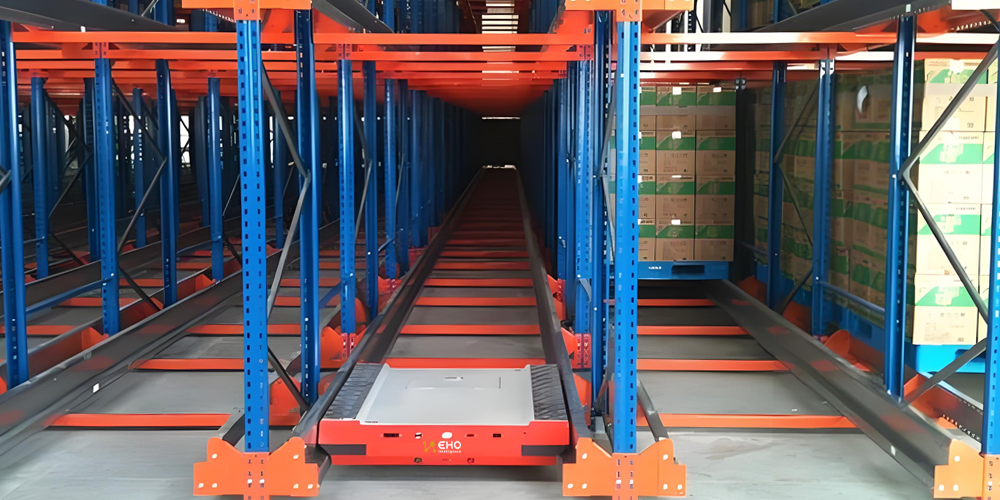Mezzanine floors, often referred to as steel mezzanines or intermediate floors, are multi-level structural additions typically installed within the existing height of a building to maximize vertical space. These floors are constructed primarily from steel, making them robust, durable, and capable of supporting significant loads.
The primary benefit of mezzanine floors lies in their space-saving design. By creating additional levels within a facility, businesses can expand their operational, storage, or office space without the need for costly and time-consuming expansions or relocations. This is particularly advantageous in industries such as manufacturing, warehousing, and retail, where space optimization is crucial.
Steel mezzanines are highly customizable, allowing for various configurations to suit specific needs. They can be designed with different load capacities, floor coverings, staircases, and safety features such as guardrails and fire protection systems. This flexibility ensures that mezzanine floors can seamlessly integrate into existing building structures and workflows.
Installation of mezzanine floors is relatively straightforward and can often be completed with minimal disruption to ongoing operations. They are typically bolted or welded to the existing building's structural supports, ensuring stability and compliance with local building codes and regulations.
Moreover, steel mezzanines are known for their long-term durability and low maintenance requirements. Steel's resistance to corrosion, fire, and pests makes it an ideal material for such applications. Regular inspections and maintenance, such as checking for loose bolts or welds, can further extend the lifespan of these structures.
In summary, mezzanine floors are an efficient and cost-effective solution for businesses seeking to expand their space without expanding their footprint. Their strength, versatility, and ease of installation make them a popular choice for optimizing vertical space in a variety of settings.





